Key Takeaways:
- Understanding the Basics: Learn the essentials of taking your cat for walks in a carrier, focusing on safety and comfort.
- Preparation and Training: Discover the step by step guide to preparing your cat for carrier walks, including harness training and familiarization.
- Practical Tips and Considerations: Gain insights into the practical aspects of walking your cat in a carrier, from choosing the right carrier to recognizing your cat's body language.
Walking your cat can be a delightful experience, offering both mental stimulation and physical exercise. But when it comes to taking your feline friend outside, safety is paramount. This comprehensive guide will explore whether you can take your cat for walks in a carrier, how to do it, and what to consider to ensure a pleasant outing for both you and your kitty.
Understanding Carrier Walks for Cats
When we think of walking pets, dogs usually come to mind. However, many cat owners are now exploring the idea of taking their feline companions out for walks. But unlike dogs, cats often require a different approach to outdoor adventures. One such method is using a carrier, which can provide a secure and controlled environment for your cat to explore the great outdoors.
Carriers come in various forms, including traditional cat carriers, backpack carriers, and even pet strollers. These options allow your cat to experience fresh air and new environments while minimizing stress and the risk of escape.
The Right Carrier for Your Cat
Choosing the right carrier is crucial for a successful walk. Backpack carriers and cat backpacks have become popular because they allow your cat to view their surroundings while you carry them on your back. Look for backpacks with extra pockets for treats and supplies, and ensure they have enough room for your cat to sit, stand, and turn around comfortably.
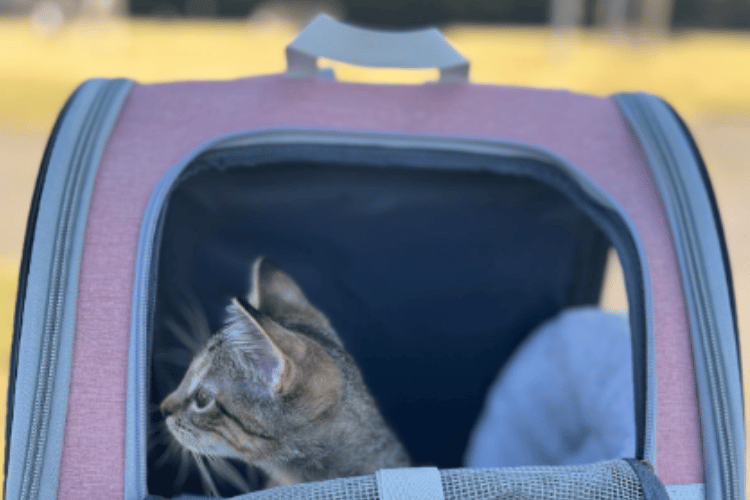
Traditional cat carriers can also be used for short walks, especially if they're designed with a secure latch and proper ventilation. For longer excursions, a pet stroller might be more appropriate, providing more room for your cat to move around and even accommodating two cats if you have a pair.
Harness Training: A Must for Safety
Before you even consider stepping outside, harness training your cat is a must. A cat harness ensures that your cat is safely secured, preventing them from darting into potentially dangerous situations. Start harness training your first cat indoors, using positive reinforcement to create a positive association with the harness.
Gradually increase the time your cat spends in the harness inside your home. Once they feel comfortable, you can leave the door open to the carrier or stroller, allowing your cat to explore it at their own pace. This slow and steady approach helps build trust and confidence in the new equipment.
Familiarizing Your Cat with the Carrier
Familiarization is key to making your cat comfortable with their carrier. Place the carrier in your house with the front door open, encouraging your cat to walk in and explore on their own terms. You can use treats or their favorite toys to entice them inside. This process helps your cat associate the carrier with positive experiences, making it easier when it's time to go outside.
For cats that are particularly hesitant, you might need to start by simply placing their bedding inside the carrier to introduce their scent. Over time, your cat will start to see the carrier as a safe space, which is essential for a stress-free walk.
Introducing the Great Outdoors
The transition from the indoor cat to an outdoor explorer should be gradual. Begin by carrying your cat in their carrier to a quiet area of your own backyard or a calm outdoor space. Allow them to observe their surroundings from the safety of the carrier, and watch their body language closely for signs of stress or curiosity.
If your cat seems relaxed, you can open the carrier and let them explore a bit more, always under your supervision. This step-by-step approach helps your cat adjust to the outside world without feeling overwhelmed.
Walking Your Cat: Step by Step Guide
Walking your cat in a carrier is not about taking long strolls as you would with a dog. It's more about giving your cat a chance to experience new sights, sounds, and smells. Start with short outings, gradually increasing the duration as your cat becomes more comfortable.
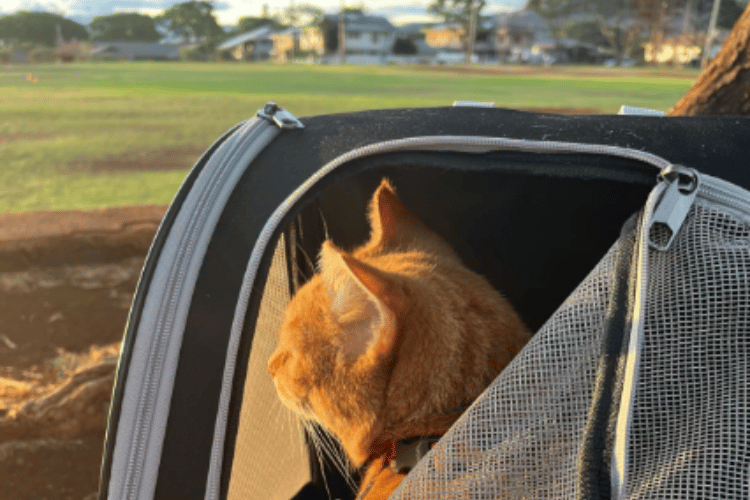
Always keep a clear path back to the safety of your home or car, and never force your cat to stay outside longer than they want to. The goal is to make these outings a fun and mutually beneficial experience.
Recognizing Your Cat's Comfort Level
Cats communicate their comfort level through body language. A relaxed cat may sit or lie down in the carrier, looking out with interest. If your cat is trying to hide, meowing excessively, or showing signs of aggression, it's time to end the outing and return home.
Understanding your cat's signals is crucial to ensuring that walks in a carrier are enjoyable rather than stressful. Remember, not every cat will be a big fan of the great outdoors, and that's perfectly okay.
Preparing for Unexpected Weather
When planning to walk your cat using a backpack carrier, it's essential to consider the whims of the weather. Most cats are sensitive to changes in the environment, and a sudden shift can turn a pleasant outing into a potentially dangerous situation.
Before heading out, check the forecast and be prepared for any unexpected changes. If it looks like rain or extreme heat, it might be best to postpone your adventure. A cat carrier that is weather-resistant can offer some protection, but it's always better to err on the side of caution.
In the event that you're caught in less-than-ideal weather, having a plan can make all the difference. If your cat's carrier is not fully enclosed, a waterproof cover can shield your furry friend from the rain. On hot days, ensure the cat backpack is well-ventilated and never leave your cat in it under direct sunlight.
Always carry water and a collapsible bowl to keep your cat hydrated. Remember, your cat's comfort and safety should always come first, and being weather-wise is a big part of that.
Adjusting to Different Environments
Taking your cat out in a carrier can be a wonderful adventure, but it's important to help them adjust to different environments. Certified feline behavior experts suggest that gradual exposure is key.
Start by placing the carrier near a window, allowing your cat to observe the world from the safety of their home. This can help them become accustomed to the sights and sounds they'll encounter outside. By doing this, you're not just putting their head in a new space physically, but you're also mentally preparing them for the variety of experiences that come with outdoor adventures.
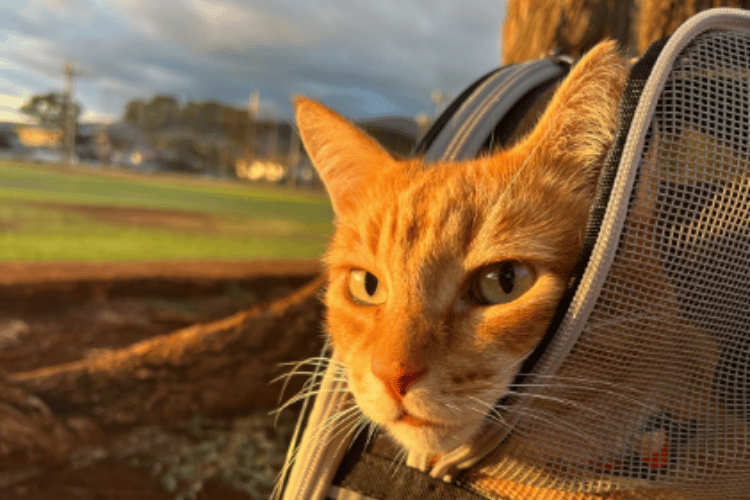
When you do decide to venture outside, remember that every cat reacts differently to new environments. Some may be curious and excited, while others might be on the wrong side of comfortable. It's crucial to pay attention to your cat's body language and vocalizations.
If they're releasing pheromones that signal distress or if their cat's scent changes due to anxiety, it's time to retreat to a familiar space. Over time, with patience and positive reinforcement, your cat will learn to walk on a leash and enjoy their carrier outings to different environments.
Exploring New Scents with Your Cat
Taking your cat out in a carrier isn't just about physical exercise; it's an olfactory adventure too! Cats have a highly developed sense of smell, and exposing them to the world outside can be incredibly stimulating. When your cat is safely tucked in their carrier, they're introduced to an array of new scents.
From the earthy aroma of a park to the salty tang of the seaside, each outing can enrich your cat's sensory experiences. This can lead to a more content and curious feline, eager to explore and understand their environment.
Moreover, these scent-filled excursions can be beneficial for indoor cats who don't often encounter smells other than their own. By allowing your cat to take in new and interesting odors from the safety of their carrier, you're providing them with a form of mental exercise that's just as important as the physical kind.
Just imagine your cat's delight at the whiff of a new flower or the trace of another cat's scent on a breeze. It's basically a feline version of reading an exciting novel!
Monitoring Your Cat's Weight During Walks
When incorporating carrier walks into your cat's routine, it's essential to monitor your cat's weight. Regular walks can contribute to weight management, ensuring your feline friend stays agile and healthy. Observe your cat's weight by checking if there is any significant weight loss or gain after starting the walking routine.
A sudden change in your cat's weight could indicate that the exercise is either too strenuous or not challenging enough, and adjustments may be necessary.

Additionally, the carrier itself can influence your cat's weight management. If the carrier is too heavy or cumbersome, it might cause undue stress on your cat, leading to weight fluctuations. Opt for a lightweight carrier that provides enough room for your cat to move comfortably without adding extra weight. This will help maintain your cat's weight in a healthy range while enjoying the benefits of outdoor excursions.
Introducing Your Cat to Other Cats During Walks
Carrier walks can be an excellent opportunity for your cat to encounter other cats and animals, which can be both exciting and challenging. When your cat is exposed to the scent of other cats while on a walk, it can stimulate their curiosity and natural instincts.
However, it's crucial to gauge your cat's reaction to these new scents and ensure they feel secure within their carrier. If your cat seems anxious or aggressive, it may be best to slowly introduce these new experiences.
To foster positive interactions, start by choosing quiet, less-populated areas for your walks where encounters with other cats are controlled and not overwhelming. Over time, as your cat becomes more accustomed to the presence and scent of other cats, you can gradually introduce them to busier environments.
Always prioritize your cat's comfort and safety, and be prepared to retreat to a familiar setting if they show signs of distress. Remember, every cat is unique, and some may prefer the solitary peace of their own company during walks.
Ensuring Comfort During Rest Periods
When planning carrier walks, it's crucial to consider your cat's weight and the need for rest. A carrier that's too small or doesn't support your cat's weight comfortably can turn a pleasant outing into a stressful ordeal.
It's important to choose a carrier that allows your cat to move around a bit and settle down into a cozy position for rest. After all, cats love their naps, and even on an adventure, they'll appreciate the opportunity to doze off in their safe haven.
Rest periods are not just about taking a break; they're also a chance for your cat to process the new experiences they've encountered. A well-rested cat is a happy cat, so make sure to plan your walks with plenty of opportunities for your furry friend to relax and recharge.
Whether it's a sunny spot in the park or a quiet corner during a family picnic, giving your cat time to rest ensures they can enjoy their outings to the fullest. Remember, a comfortable cat is one that will look forward to future walks in their carrier.
Health Checks and Weight Management
Before embarking on regular carrier walks, it's wise to consult with your vet to ensure your cat is in good health for this new activity. A health check can confirm that your cat's weight is within a healthy range, which is essential because an overweight cat may face additional stress and health risks during physical activities.
Your vet can provide guidance on diet and exercise that's tailored to your cat's weight and age, ensuring that your walks are beneficial rather than burdensome.
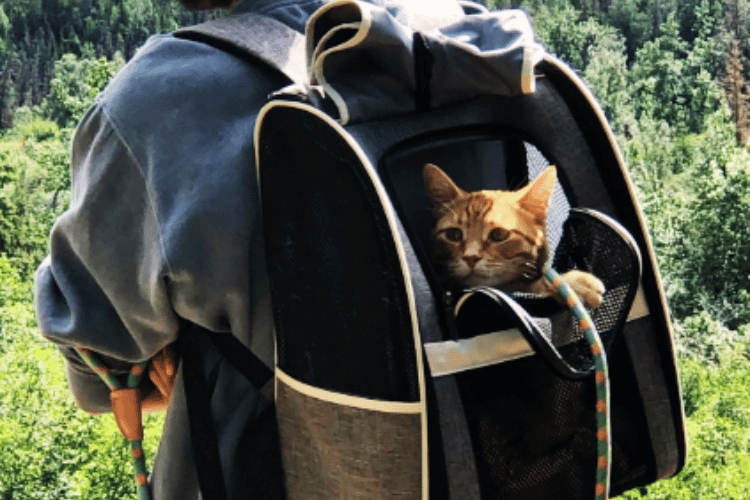
Moreover, regular walks can actually contribute to managing your cat's weight. The physical exercise involved in walking, even if it's just a gentle stroll with your cat in the carrier, can help keep them lean and fit. However, it's important to monitor their response to exercise.
If your cat seems overly tired or reluctant, it might be a sign that the walk is too strenuous, or their harness isn't fitting properly. Remember, the goal is to enhance your cat's well-being, so keep an eye on their behavior and adjust the duration and intensity of walks accordingly.
The Importance of a Proper Fit
Selecting a cat backpack that's the right fit is crucial for your cat's comfort and safety during walks. A backpack carrier that's too small can make your cat feel cramped and anxious, while one that's too large could allow your cat to move around too much, potentially leading to injury.
To ensure a proper fit, measure your cat's weight and size and compare it with the manufacturer's specifications. Most carriers will have a weight limit and size recommendations to help you choose the right one.
Moreover, a proper fit isn't just about size; it's also about making sure the backpack carrier is secure. Check that all zippers and closures are sturdy and that there's no risk of your cat pushing its way out.
The backpack should have comfortable straps for you and a cozy interior for your cat, potentially with a soft mat or blanket that carries your cat's scent. This will help your cat feel at ease, as the familiar smell can be very comforting in a new environment. Remember, a well-fitted carrier is a cornerstone of a positive cat walking experience.
The Benefits of Carrier Walks
Carrier walks can provide your indoor cat with much-needed exercise and mental stimulation. They can also be a good alternative for cats that don't take well to leash walking but still show an interest in the world beyond their front door.
Moreover, for cats that get anxious during car rides to the vet or other destinations, regular carrier walks can help desensitize them to travel, making necessary trips less traumatic.
Safety Precautions and Tips
Safety should always be your top priority when taking your cat outside. Ensure that the carrier is secure and that there's no risk of your cat escaping. Be mindful of the weather and avoid extreme temperatures, as cats can overheat or become too cold quite easily.
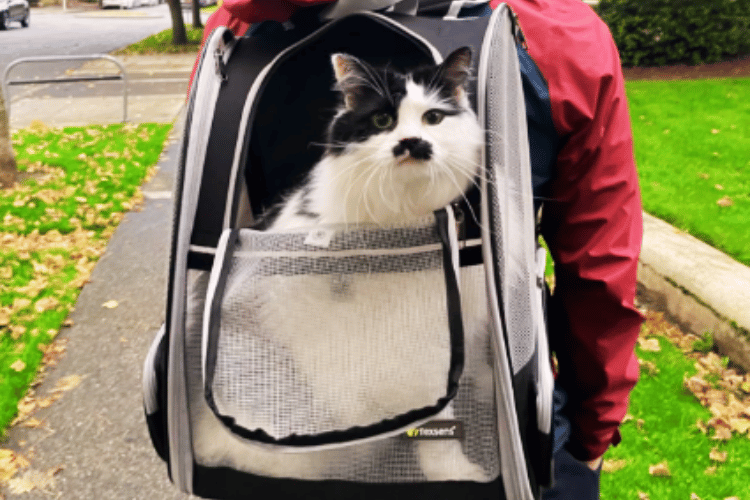
Also, be aware of other animals, especially dogs, that might pose a threat or scare your cat. It's best to avoid areas with heavy foot or vehicle traffic, as the noise and movement can be overwhelming for your kitty.
Choosing the Best Time for Walks
The best time for walks can depend on your cat's personality and the local environment. Some cats may prefer the quiet of early morning or evening, while others might be more curious during the day.
Observe your cat's behavior and choose a time when they are typically more active and alert. This will increase the chances of a positive experience for both of you.
Training Your Cat for Carrier Walks
Training your cat for carrier walks involves more than just getting them used to the carrier. It's about creating a routine that your cat can anticipate and feel comfortable with. Use treats and praise to reinforce good behavior, and always be patient.
If your cat seems to enjoy the walks, you can gradually increase the complexity by introducing new environments or extending the duration of the outings. However, always let your cat set the pace.
Dealing with Setbacks
Not all walks will go as planned. Your cat may have days when they simply aren't interested, or they might become spooked by something unexpected. It's important to remain calm and reassuring, and not to push your cat beyond their comfort zone.
If a particular outing doesn't go well, take a break and try again another day. Consistency and patience are key to successful carrier walks.
The Social Aspect of Carrier Walks
Carrier walks can also be a social activity for you and your cat. Many cats enjoy watching people and other pets from the safety of their carrier. These outings can be an opportunity for socialization, especially if you have a kitten or a particularly sociable cat.
However, always prioritize your cat's comfort and be ready to retreat if they become anxious or overwhelmed by social interactions.
When to Avoid Carrier Walks
There are times when carrier walks may not be appropriate. If your cat is sick, stressed, or recovering from surgery, it's best to keep them indoors.
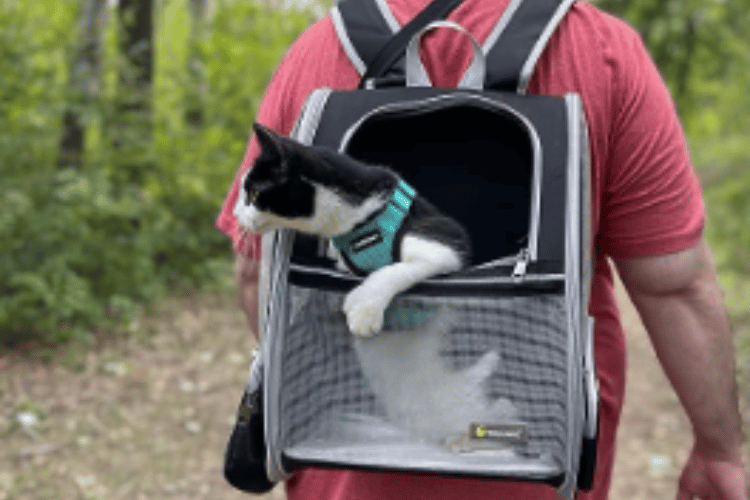
Additionally, if you live in an area with a greater risk of predators or other dangers, it may be safer to find alternative ways for your cat to explore. Always consider your cat's health and the safety of your environment before deciding to take them out in a carrier.
Accessories for Carrier Walks
To make carrier walks more enjoyable, consider investing in accessories. Many backpacks come with extra pockets for storing water, treats, and a portable litter box. Some carriers also have attachments for toys or can be opened to allow your cat more room to stretch.
These accessories can make the walk more convenient for you and more comfortable for your cat, ensuring that everyone has a good time.
Summary
Taking your cat for walks in a carrier can be a rewarding experience that provides enrichment and exercise. It's important to choose the right carrier, introduce your cat to it gradually, and pay close attention to their comfort level. With patience and proper training, carrier walks can become a fun and safe activity for you and your feline friend.
FAQ Section
How do I know if my cat enjoys carrier walks?
Observe your cat's body language. If they seem relaxed and curious, they're likely enjoying the experience. Look for signs of contentment, such as purring or a calm demeanor. If they appear stressed or anxious, it's best to end the walk.
Can I take two cats for a walk in one carrier?
It depends on the size of the carrier and the temperament of your cats. If the carrier is spacious enough and your cats get along well, it can be possible. However, always monitor their behavior closely to ensure they're both comfortable.
How long should carrier walks last?
Start with short outings of 10-15 minutes and gradually increase the duration as your cat becomes more comfortable. The length of the walk will depend on your cat's tolerance and interest. Always let your cat's behavior guide you.
Thank you for visiting LegitLists we hope this helps you make a legitimate choice!






